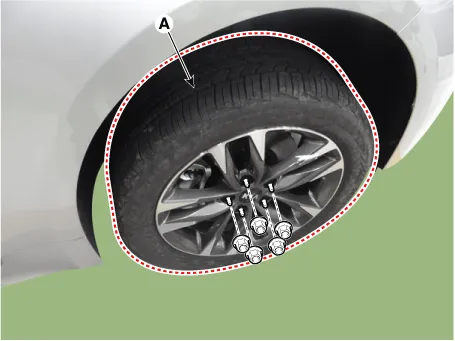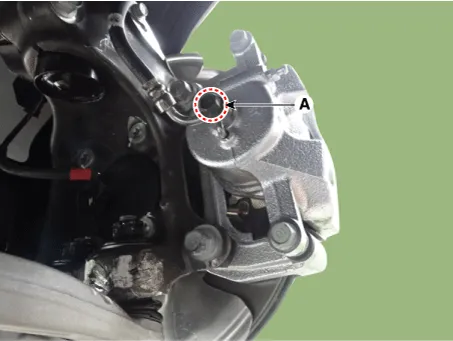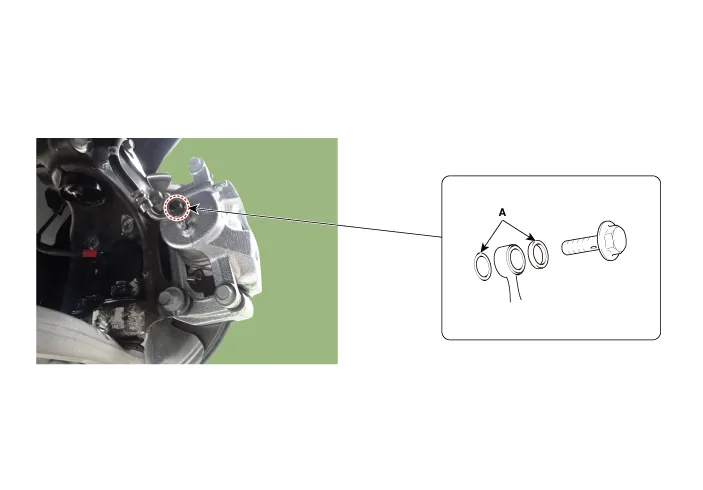Kia Stinger CK: Brake System / Brake Line
Components and components location
| Components |

Repair procedures
| Removal |
| 1. |
Turn ignition switch OFF and disconnect the negative (-) battery cable. |
| 2. |
Remove the brake fluid from the master cylinder reservoir with a syringe.
|
| 3. |
Remove wheel nuts, front/rear wheel and tire (A) from front/rear hub.
[Front] |
| 4. |
Loosen the flare nut (A) and then disconnect the tube. |
| 5. |
Disconnect the brake hose clip (B).
[Rear] |
| 6. |
Loosen the flare nut (A) and then disconnect the tube. |
| 7. |
Disconnect the brake hose clip (B).
|
| 8. |
Loosen the front/rear brake cailiper hose bolt (A).
|
| Inspection |
| 1. |
Check the brake tubes for cracks, crimps and corrosion. |
| 2. |
Check the brake hoses for cracks, damage and fluid leakage. |
| 3. |
Check the brake tube flare nuts for damage and fluid leakage. |
| 4. |
Check brake hose mounting bracket for crack or deformation. |
| Installation |
| 1. |
Install in the reverse order of removal.
|
| 2. |
After installation, bleed the brake system. (Refer to Brake system - "Brake Bleeding Procedures") |
| 3. |
Check the spilled brake oil. |
Other information:
Kia Stinger (CK) 2018-2023 Service Manual: System malfunction
When the “Check System” warning message appears, the system is not working properly. In this case, have the vehicle inspected by an authorized Kia dealer. WARNING The Driver Attention Warning system is not a substitute for safe driving practices. It is the responsibility of the driver to always drive cautiously to prevent unexpected and sudden situations from occurring.Kia Stinger (CK) 2018-2023 Service Manual: Side Impact Sensor (SIS)
Description and operation Description • Side Impact Sensor (SIS) system consists of two Pressure Side Impact Sensor (P-SIS) installed at each center of the front door module (LH and RH), two SIS installed at each center pillar nearby (LH and RH) and two rear SIS installed in the rear pillar (LH and RH). • Pressure Side Impact Sensor is also called P-SIS because it detects pressure from collision at its mounting location.







